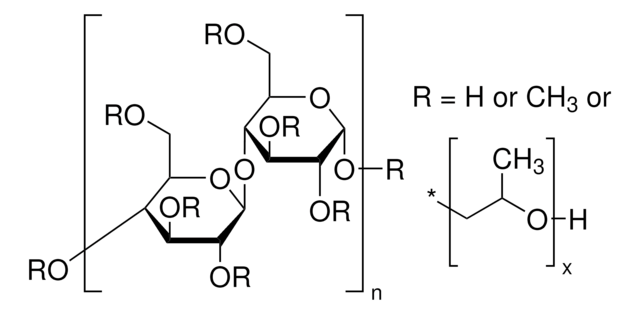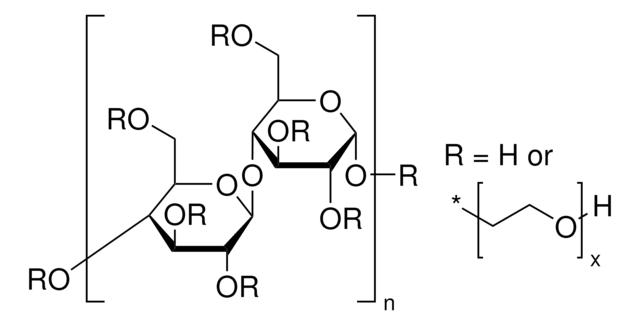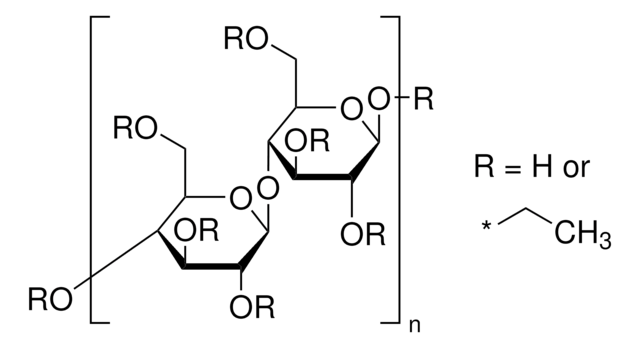191884
Hydroxypropyl cellulose
average Mw ~100,000, powder, 20 mesh particle size (99% through)
About This Item
Produits recommandés
Description
biological oxygen demand (BOD) 14,000 ppm
Forme
powder
Température d'inflammation spontanée
752 °F
Poids mol.
average Mw ~100,000
Impuretés
<5 wt. %
Taille des particules
20 mesh (99% through)
pH
5.0-8.5
Tension interfaciale de l'huile minérale
12.5 dyn/cm, 0.1 wt. % in H2O (vs. mineral oil)
Viscosité
65-175 cP, 5 wt. % in H2O(25 °C, Brookfield, spindle #1) (30 rpm)(lit.)
Solubilité
polar organic solvents: soluble
Densité
0.5 g/mL at 25 °C (lit.)
InChI
1S/C12H20N2/c1-5-12(13)11-7-6-10(14(3)4)8-9(11)2/h6-8,12H,5,13H2,1-4H3
Clé InChI
RRHXDYJWVYFMKV-UHFFFAOYSA-N
Vous recherchez des produits similaires ? Visite Guide de comparaison des produits
Catégories apparentées
Description générale
Application
- HPC is soluble in organic solvents which makes it suitable for the preparation of polymer gel electrolytes for electrochemical devices. The network-forming ability of HPC can improve the mechanical and electrical properties of gel electrolytes.
- Electrospun hydroxypropyl cellulose nanofibres can be used to develop drug delivery systems for a variety of hydrophobic drugs.
- Hydroxypropylcellulose combined with an effervescent agent like sodium carbonate can be usedas a binder and functional material to prepare floating tablets for thecontrolled release of ofloxacin.
Code de la classe de stockage
11 - Combustible Solids
Classe de danger pour l'eau (WGK)
WGK 1
Point d'éclair (°F)
Not applicable
Point d'éclair (°C)
Not applicable
Équipement de protection individuelle
Eyeshields, Gloves, type N95 (US)
Certificats d'analyse (COA)
Recherchez un Certificats d'analyse (COA) en saisissant le numéro de lot du produit. Les numéros de lot figurent sur l'étiquette du produit après les mots "Lot" ou "Batch".
Déjà en possession de ce produit ?
Retrouvez la documentation relative aux produits que vous avez récemment achetés dans la Bibliothèque de documents.
Les clients ont également consulté
Notre équipe de scientifiques dispose d'une expérience dans tous les secteurs de la recherche, notamment en sciences de la vie, science des matériaux, synthèse chimique, chromatographie, analyse et dans de nombreux autres domaines..
Contacter notre Service technique





